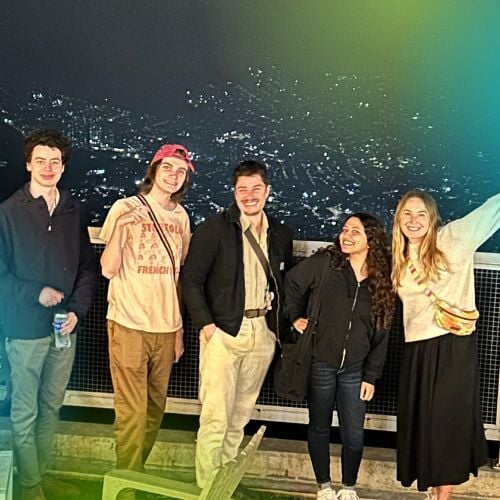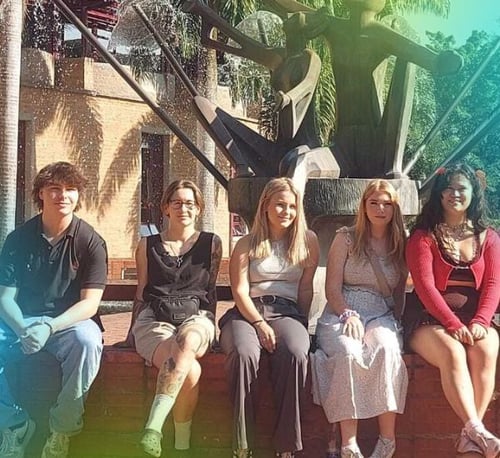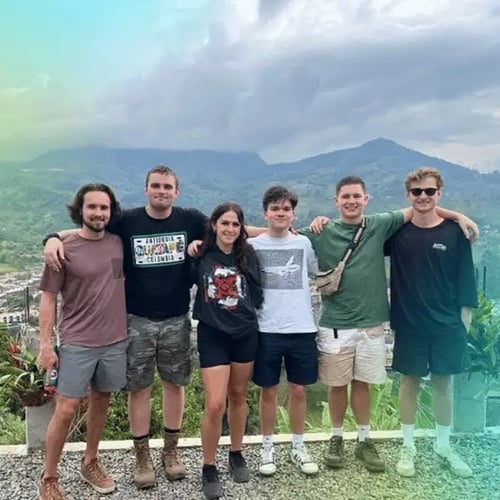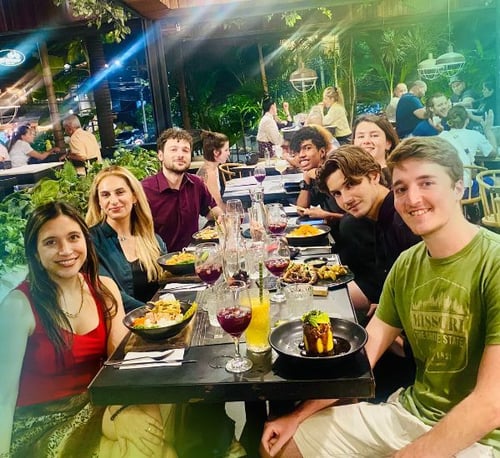Hear From Our Alumni: Life-Changing Internship Experiences in Medellín
Admin-1.jpg?width=760&height=550&name=ricardo-gomez-angel-L6T_6Rp2iEk-unsplash%20(1)-1.jpg)
If you're wondering what it's really like to intern abroad in Medellín, Colombia, let our alumni tell you in their own words. From professional development to personal transformation, these powerful stories from Intern Latin America alumni showcase what makes interning in Medellín such a unique and impactful experience.
Professional Growth in a Real-World Setting.
Luis Sosa, a former scholarship recipient of The Intern Group, shared how his internship in Medellín pushed him to grow professionally in ways he never expected. Working long hours on a project deadline, Luis began to understand the demands of a real-world career and the fulfillment that comes from doing meaningful work.
"Although the hours were long and at times exhausting, I didn’t mind because I knew that what I was doing was important. I realized that time becomes irrelevant when it is spent on something you genuinely care about."
Luis worked on developing a code of ethics for his host company, an experience that challenged him intellectually and professionally. It demanded objectivity, critical thinking, and a deep sense of responsibility. His insights into organizational behavior and ethical frameworks are the kinds of lessons no textbook could provide.

Building Lifelong Friendships and Cultural Awareness.
Beyond professional skills, our interns frequently emphasize the relationships they build. Luis describes the deep connections he formed with his coworkers and other interns:
"I got to know people beyond the generic greetings. Getting to know my colleagues created a feeling of familiarity that made a radical difference in my internship. I still keep in touch with some of them to this day."
The cultural exchange was just as meaningful as the work itself. From casual conversations to shared meals, Medellín’s famously warm "Paisa" hospitality made interns feel not only welcomed but valued.

Ecological and Social Awareness in a Modernizing City.
Luis was also captivated by Medellín’s ecological beauty and sustainability initiatives. From recycling stations to the innovative metro cable system, he was impressed by the city’s commitment to green urban development:
"Medellín prides itself on its natural beauty and celebrates it passionately. The ecological consciousness here is deeply inspiring."
He even visited places like Parque Arví and Guatapé, marveling at Colombia’s stunning biodiversity and learning how environmental sustainability is embedded into the city’s identity.
Insight into Urban Development and Global Issues.
Another alum, who interned with the municipality of Sabaneta as a mobility strategist, gained first-hand experience working with city officials on infrastructure planning. She shared:
"Working in Sabaneta helped me understand the challenges developing cities face. It shaped my career path and gave me tools to make informed academic and professional decisions."
She developed a comprehensive mobility plan, researched global best practices, and contributed to real municipal strategies to reduce traffic congestion. It was a unique opportunity to gain relevant experience in urban planning, which is especially valuable for those passionate about international development.

A Warm Welcome and a Dynamic First Week.
In the early days of his internship, Luis recalled the warm welcome he received at his host company and how it set the tone for the rest of his time in Medellín:
"Everyone at my internship location was very happy to see a new face. It felt like a college commencement. We were taught, received instructions, and then released into the world. It made me feel part of something bigger than myself."
This sense of community is a recurring theme among our interns, who are often surprised by how quickly they feel at home, even in a city far from their own.

Personal Reflection, Growth, and Global Perspective.
One thing our Medellín interns agree on? The experience changed how they view the world and themselves.
"This experience showed me what I’m capable of achieving. It’s encouraged me to move forward with my dreams of helping build infrastructure in underdeveloped cities," said one intern reflecting on her transformation.
Another added:
"I have learned to appreciate the work of others, to be thankful for opportunities like this one, and to value determination as a tool to overcome obstacles."
Final Goodbyes and Lifelong Impact.
When the internships end, many alumni describe a bittersweet farewell; one filled with gratitude, not sadness. Luis reflected:
"I left Medellín with memories, experiences, and amazing friends. As I walked out of the company for the last time, I felt that I had accomplished my mission."
For our interns, Medellín is more than just a place to work. It's where they grow, adapt, connect, and gain a new vision for their future. Whether you're interested in international business, public policy, sustainability, or urban development, Medellín offers a truly transformative internship experience.
If you’re seeking an internship that offers professional experience, cultural immersion, and personal growth, Medellín could be the perfect fit.


